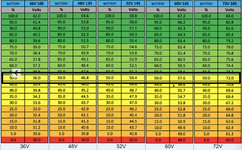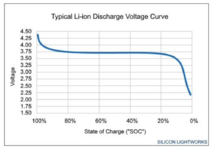Hi folks. I'm sure this will have been covered, but my computer is old and it seems my browser will not let me browse to find battery charging posts. Anyway, I'm new to ebikes and just been using my first ebike....love it...., but now I'm thinking about charging it. My question is in three parts.
a) Does the charge in the battery affect the performance of the bike (is a fully charged the same as a half charged)?
b) When should I charge......when the battery is half charged, or does it not matter?
c) What are some dos and don'ts for good battery maintenance? Thanks
My battery is a 48v type. Fully charged it shows about 52v. Now it is 46v. Also, I tried to use my multimeter to measure the battery. I clearly made contact with the battery terminals but couldn't get any reading. I had the multimeter set to 20v DC. Am I doing something wrong?
a) Does the charge in the battery affect the performance of the bike (is a fully charged the same as a half charged)?
b) When should I charge......when the battery is half charged, or does it not matter?
c) What are some dos and don'ts for good battery maintenance? Thanks
My battery is a 48v type. Fully charged it shows about 52v. Now it is 46v. Also, I tried to use my multimeter to measure the battery. I clearly made contact with the battery terminals but couldn't get any reading. I had the multimeter set to 20v DC. Am I doing something wrong?



